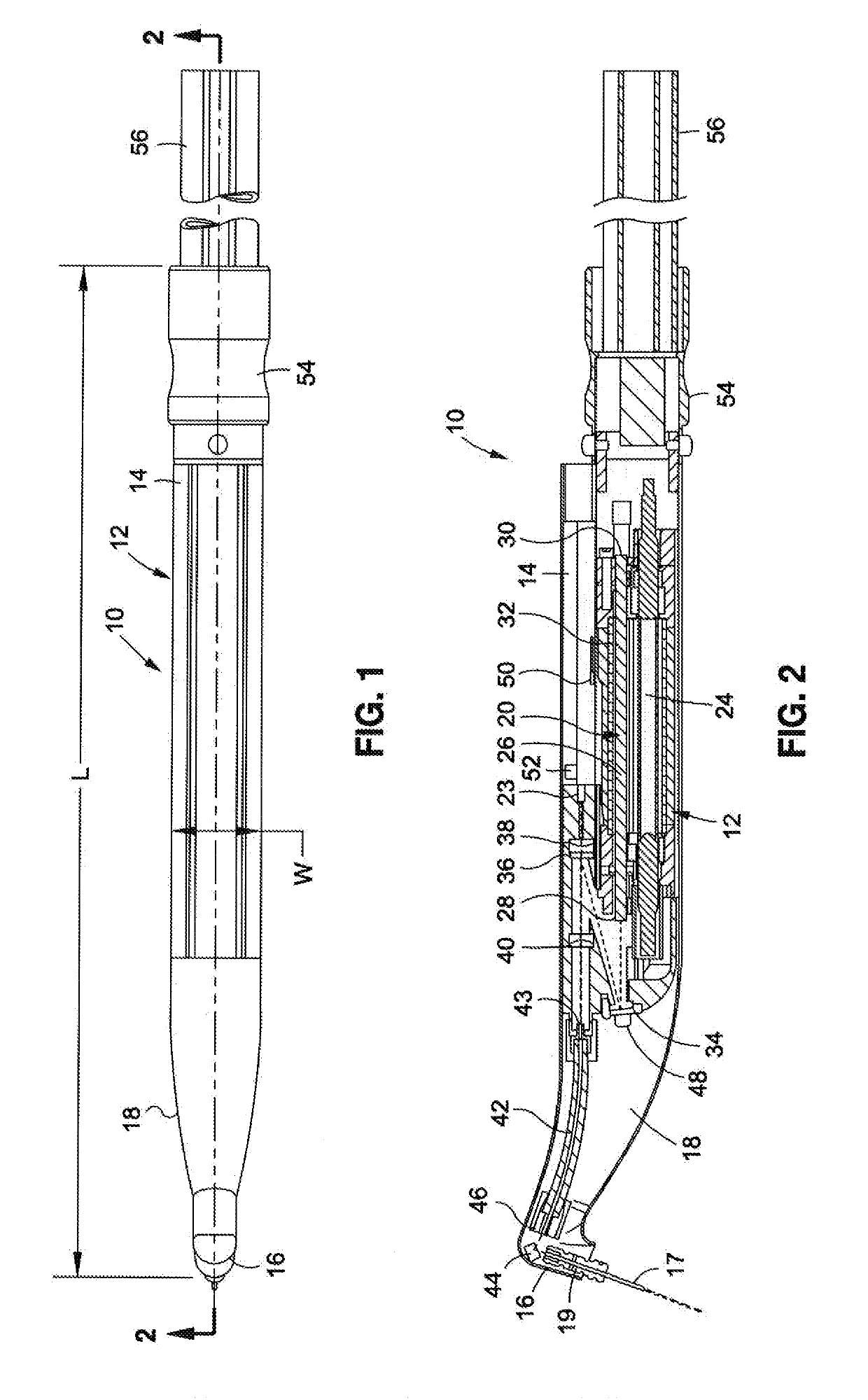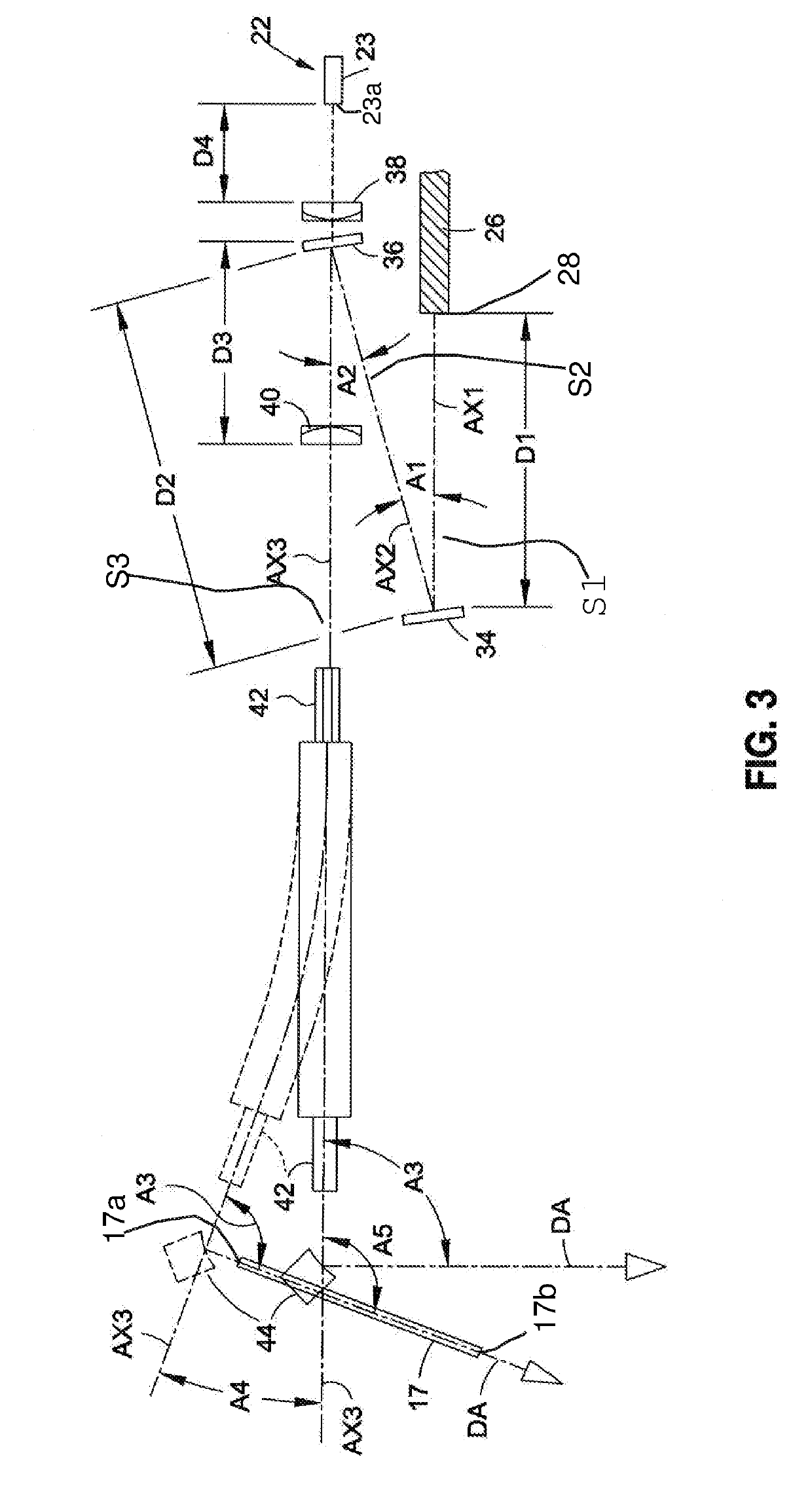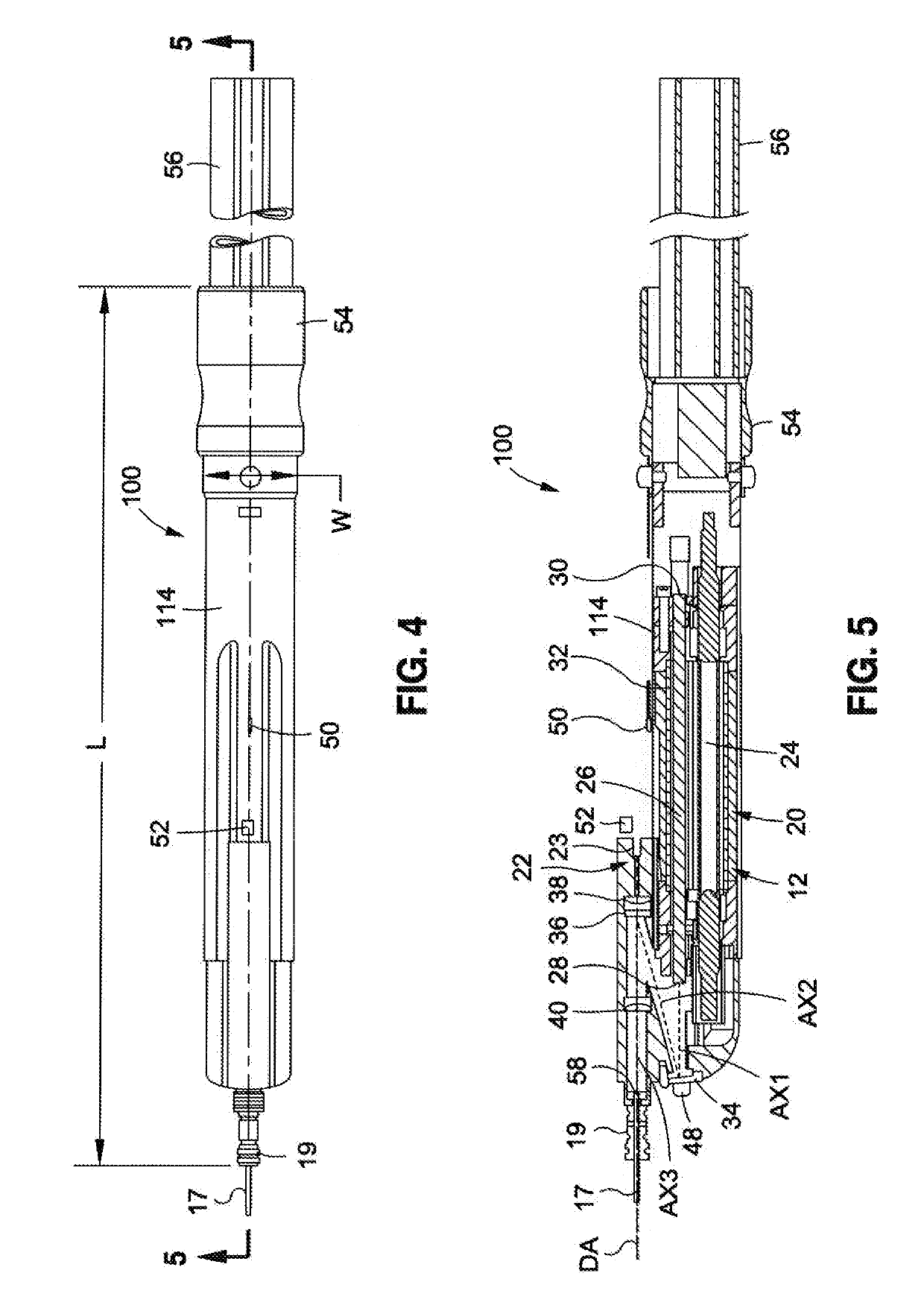Dual wavelength laser treatment device
a laser treatment device and dual-wavelength technology, applied in the field of medical laser systems, can solve the problems of greater injury and hemorrhage, and achieve the effect of reducing the inflammatory
- Summary
- Abstract
- Description
- Claims
- Application Information
AI Technical Summary
Benefits of technology
Problems solved by technology
Method used
Image
Examples
Embodiment Construction
[0045]Referring now to the drawings for purposes of illustrating the various embodiments of the invention, and not for purposes of limiting the same, FIGS. 1 and 2 depict a hand-held, dual wavelength treatment device or hand-piece 10 constructed in accordance with one embodiment of the invention. In some embodiments, the device 10 comprises an elongate housing 12 which, as most easily seen in FIG. 2, showing a cross-sectional view taken along line 2-2 of FIG. 1, defines three separate regions, including a main body region 14, a distal head region 16, and a neck region 18. The neck region 18 can form a transition between the main body region 14 and the distal head region 16. In the embodiment shown in FIG. 2, the neck region 18 comprises a generally arcuate contour or profile. As will be discussed in more detail below, this arcuate contour is selected to cause laser energy to be transmitted from the output end 17b of an elongate delivery fiber or tip 17 (which directs the laser energ...
PUM
 Login to View More
Login to View More Abstract
Description
Claims
Application Information
 Login to View More
Login to View More - R&D
- Intellectual Property
- Life Sciences
- Materials
- Tech Scout
- Unparalleled Data Quality
- Higher Quality Content
- 60% Fewer Hallucinations
Browse by: Latest US Patents, China's latest patents, Technical Efficacy Thesaurus, Application Domain, Technology Topic, Popular Technical Reports.
© 2025 PatSnap. All rights reserved.Legal|Privacy policy|Modern Slavery Act Transparency Statement|Sitemap|About US| Contact US: help@patsnap.com



